While monotheistic religions like Islam, Judaism, and Islam worship only one god who created all and everything, the Celts were doing it a bit differently. From the god of knowledge to something as ‘small’ as the realm of riding horses, everything was allowed to have its god, even horses.
However, the horse goddess of the Celts, known as Epona, also functioned as the Roman emperors’ horse guard. How is it possible that a god is both part of the Celtic traditions as well as the Roman tradition? The story of Epona gives us a bit more insight into this ancient cultural mingling.
Table of Contents
A Celtic or Roman Deity?
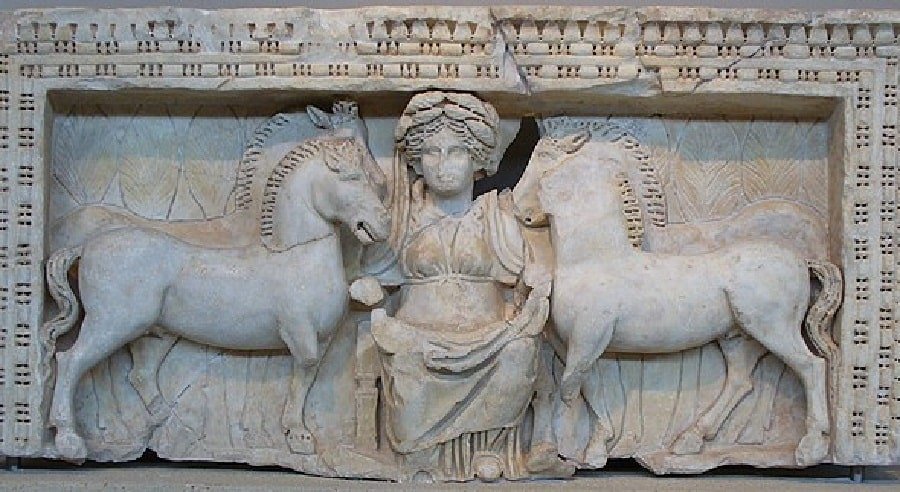
Although generally considered a goddess of the Celts, historians and archaeologists aren’t entirely sure if that’s the case. That’s mainly because Epona’s depictions are found across the empire of Rome. Or rather, the earliest inscriptions and carved monuments dedicated to Epona are thought to originate in the Roman period.
While she probably originates from modern-day Britain, all the evidence of her existence can be found within the boundaries of the Roman empire. Sure, this also includes Britain, but the distribution of Epona’s worship wouldn’t necessarily indicate that she originates from there.
What’s even more intriguing is that in general, her representations are found in large numbers. That is, relative to other representations of Celtic deities. The representations of the great mare itself are also more so related to the Graeco-Roman traditions than to the Celtic tradition. So why, then, is she generally considered a Celtic goddess?
How the Romans Erased Legacies and Cultures?
The fact that Epona is mainly considered a Celtic goddess has mostly to do with two things. The first is that the evidence for something to be considered a Celtic deity is often only verifiable through sources that were written and developed in later ages.
That is to say, the Romans mastered the art of canceling out the cultures they conquered through the burning of documents, including books and general (wooden) inscriptions. So to consider something to belong to the Celtic tradition was predominantly verifiable through non-Celtic sources. Quite the contradiction. But it explains why we can’t be a hundred percent sure about the origins of the Great Mare.
Why is Epona Named Epona?
The second and more certain reason can be traced back to the name Epona itself. Epona doesn’t resonate with any English word, which makes perfect sense because it is a Gaul name.
Gaulish is a language of the Celtic family, spoken during the Iron Age, and was quite popular in the empire of Rome. While Latin was still the lingua franca in the empire, Gaul was spoken over much of contemporary north-western Europe. Of course, this has to do with the fact that Rome conquered the territory of the Celts.

READ MORE: The Complete Roman Empire Timeline: Dates of Battles, Emperors, and Events
A Horse Name for a Horse Goddess
As expected, the horse goddess has a name that refers to the very thing she is often related to. Indeed, epos means horse in Gaulish. Yet, epos is normally regarded to be a male name. Or rather, the -os is the masculine singular ending. The female singular ending, on the other hand, is -a. Therefore, epa means a mare or female horse.
But that doesn’t make Epona. The ‘on’ component should still be explained.
In fact, it is actually something that is often added to the names of Gallo-Roman or Celtic gods and goddesses. The most probable explanation for this is to turn something like another animal or object into something that is human.
It would be a bit weird if the Celtic goddess was just called ‘horse’ wouldn’t it? Therefore, adding the ‘on’ part was necessary to give the name its human dimension: Epona.
READ MORE: Roman Gods and Goddesses
Who is Epona the Goddess?
So, it is almost certain that Epona was widely worshiped in the Roman empire. The fact that her name wasn’t changed to a Latin name is quite unorthodox. She is actually the only known Gaul deity that has been embraced in the original form by the Romans. Well, at least in terms of her name and representation.
Even though all the Greek gods were renamed by the Romans, Epona was allowed to keep her original name. This led to Epona being worshiped in many different places. Yet, originally, she was worshiped by the military, as we will see later. That doesn’t mean that she wasn’t adopted by the Roman households themselves, however.
Especially in the countryside of Rome, she became a deity that was highly regarded, considered to be protecting the stables and the horses of common people outside of the military. Anyone reliant on horses on a daily basis saw goddess Epona as one of the most important deities.
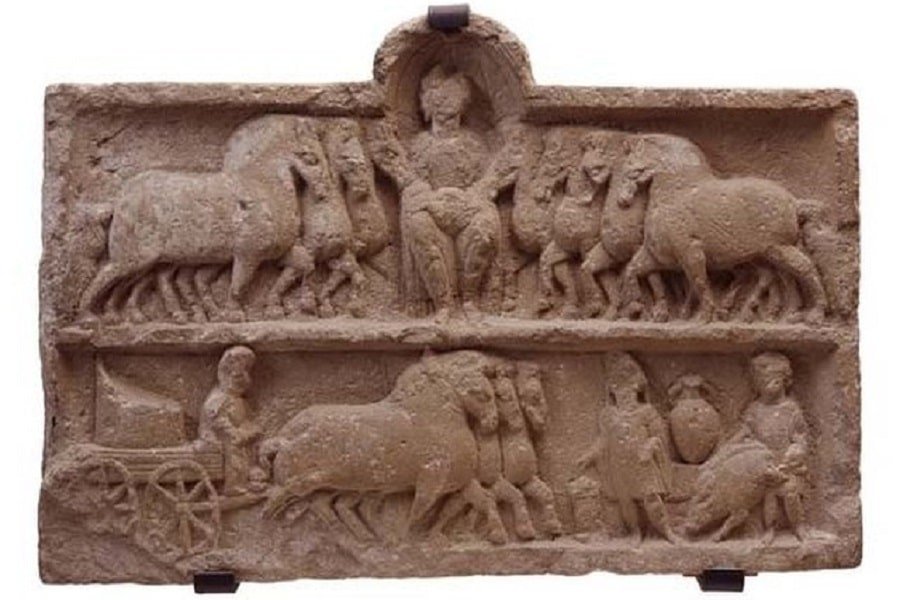
How Was Epona Worshiped?
The legendary horse goddess was worshiped in various ways, mainly depending on the fact whether the worshiper was a soldier or a civilian. In all cases, however, she was worshiped as Epona Augusta or Epona Regina.
These names indicate that Epona was worshiped in relation to the Roman emperor, or even the Roman king and queen. That’s right, before Julius Caesar came to power around five centuries AD, the life of the people of Rome was ruled by a king.
Epona was often related to the monarchy, which might have something to do with the importance of horses for the Roman kingdom and the Roman people.
Worship in the Military
When it comes to the military, the cavalry crafted little shrines to set up shop in preparation for a battle. This, too, explains why she was relatively far spread over the empire. Before battles, the soldiers would sacrifice to these shrines and ask for a safe and victorious fight.
Civilian Worship
Civilians worshiped a bit differently, however. Any site where civilians would hold their horses and other animals was seen as a place of worship for Epona. They used tokens with different symbols, art, and flowers to worship. However, it could also encompass a small statue erected in houses, barns, and stables.
Why pray to a Great Mare, you ask? Well, fertile horses were seen as a good source of income and prestige. A good horse or donkey was an important source of transportation in the ancient empire. Among the elite in particular, a strong horse was a valuable source of prestige.
Epona, being the goddess of horses, was seen as the Celt that could provide this fertility. By worshiping her, civilians believed that they would receive fertile stables and strong mares for their herds.
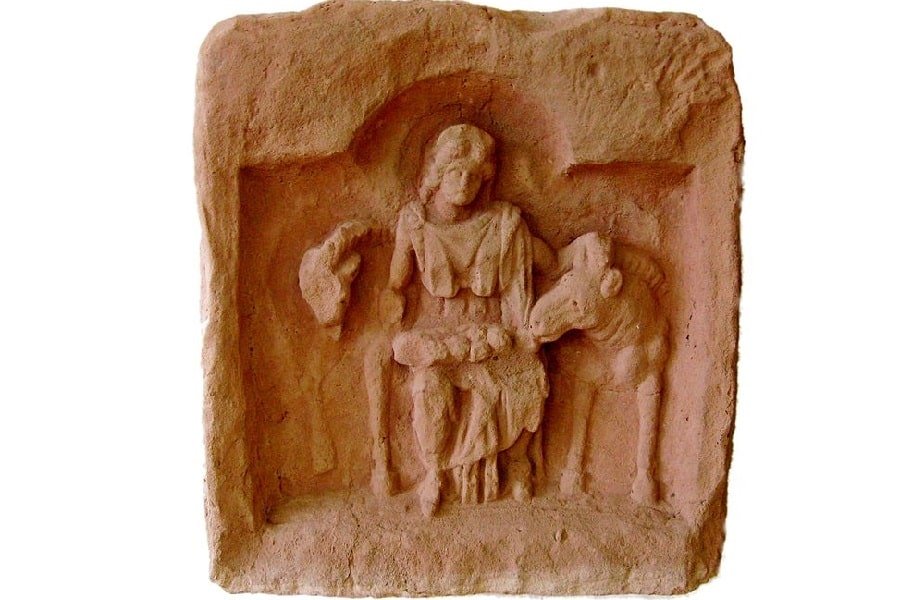
The Forms of Epona
Epona could be seen in three varying forms when it comes to her worship. The first one is the traditional way of portraying her, as a mule or a horse, following the Celts and their Gaul tradition. In this sense, she was portrayed as an actual horse.
In this tradition, it wasn’t customary to portray gods in their human form. Rather, the thing that the god represented was used for depiction.
The Romans, however, didn’t care about the Gaulish folklore tradition. As soon as they started worshiping her, she was molded into the belief system of Rome, meaning she started to be depicted in the same way other Roman gods were portrayed: in a human form while riding a chariot with two horses.
What Does Epona Represent?
If one would ask the cult of Epona today, they would probably say that she represented different things. For one, she was the protector of horses, mules, and cavalry; as already identified before. However, her influence was a bit wider.
General fertility was also something related to the goddess, which explains why she is often depicted with a grain or a cornucopia. A cornucopia, in case you were wondering, is often seen as a sign of abundance.
The combination of horses and abundance makes researchers believe that she was seen as a deity of prosperity within the equestrian home and on the battlefield.
Sovereignty and Rulership
There is some evidence that Epona could have been linked to the idea of sovereignty as well as being a horse goddess and linked to the land and fertility. Certainly, the fact that she was invoked on behalf of the Roman Emperor implies a link of some kind to rulership and horse symbolism is a recurring theme of sovereignty.
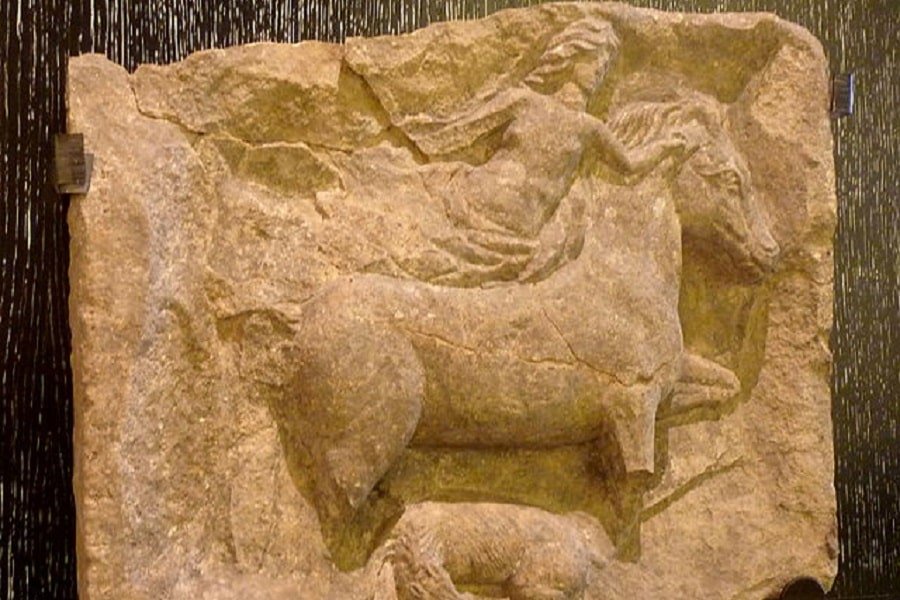
Transferring Souls
But, she also ventured out of that realm. Actually, it is believed that she also served as the one who would ‘transfer’ souls from the living world into the underworld.
There are some discoveries of graves that are accompanied by Epona in her horse form supporting this notion. However, Ceres would probably also have a good argument for that role in Roman mythology.
The Tale of Epona
It should be clear that the origins of Epona are quite hard to pin down, and original interpretations of the goddess are somewhat unidentifiable. Still, one tale of the origin of Epona has survived through spoken word and some written pieces.
The actual tale, however, still doesn’t really tell us a lot. It only indicates how she was given birth, and potentially why she was considered a goddess.
It was written down by the Greek writer Agesilaus. He identified that Epona was given birth by a mare and a man.
Apparently, the mare gave birth to a beautiful daughter blessed with the name Epona. Because she was the result of such an odd combination, and some other factors involved, Epona became known as the goddess of horses.
It’s probable that the mare mother of Epona was considered to be of divine nature, making Epona the next deity in a line of horse deities.
Where Was Epona Worshiped?
As indicated, Epona was worshiped in the Roman empire. However, not over the entire empire, which was gigantic. Even in some of the smallest countries on earth, there is a high diversity in religions that are worshiped, so it would only make sense there was at least an equal diversity among the people that considered themselves Romans.
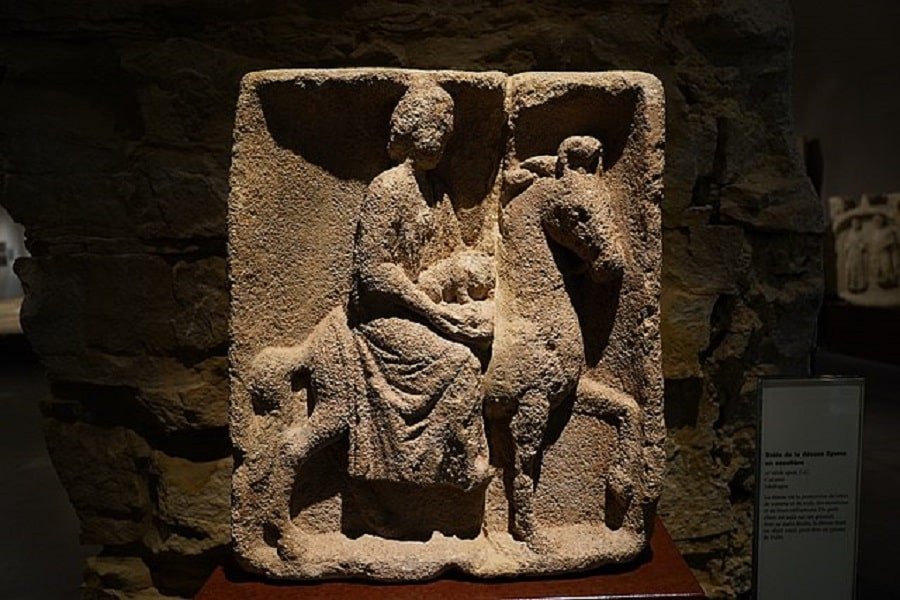
Depictions and Inscriptions
Where exactly the goddess Epona was worshiped can be uncovered by looking at the depictions and inscriptions that are found of her. Luckily, we have many archeologists and anthropologists that have enabled us to identify where Epona’s influence was the biggest.
Epona in Western Europe
By far the largest concentration of inscriptions and depictions of Epona can be found in Western Europe, mainly in the areas that we today know as south Germany, eastern France, Belgium, Luxemburg, and a bit of Austria.
The clustering of Epona depictions can be related to the northern border of the empire: the limes. Because it is right at the border, an area heavily guarded by the Romans, we can say with a level of certainty that the horse goddess was highly regarded by the military. Probably because she had the potential to do wonders for the mighty Roman cavalry.
Epona in Other Parts of the Roman Empire
Outside of Western Europe, there were not a lot of Epona representations. Actually, there were a total of three representations surrounding the capital of the empire.
In contemporary northern Africa, there was but one, and east of Rome the representations of Epona were few and far between. Let alone outside the empire, where no representations of Epona have ever been found.
All and all, Epona was probably one of the gods known all over the empire, but mainly worshiped in the border areas, or by people that were just big fans of horses.
How Was Epona Adopted by the Roman Military?
So, Epona was able to make her way through Rome, mostly with the help of the soldiers and warriors of the Roman military. The military consisted of many men that were not citizens of Rome. Rather, they were part of groups and tribes that were conquered by the empire. To attain citizenship would mean that the men would have to serve for a number of years in the military.
Because of this, the religions and gods worshiped by the military were highly diverse. Even though the Gauls were not one of the prominent groups in the cavalry, their horse goddess made a lasting impact. Epona was seen as being of great value to the Gauls, which meant that eventually, the whole Roman army would adopt her.